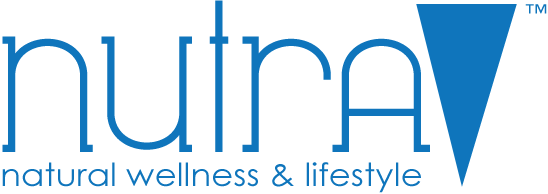How Much Exercise Is Enough?
Life keeps us all pretty busy. Between work, raising children, caring for our pets, preparing food, keeping up with our homes, shopping, and fitting in fun in our lives, many of us don't have enough time to work out.
We know exercise is important so we fork out for health club memberships, but then end up frustrated with taking hours out of our days to stay in shape; but, do we really need to invest that much money and time to stay fit? Do you need to spend the high price of a 90-minute boot camp class three times a week? How much exercise is enough to maintain your health and balance, feel great, and live a long and productive life?
What if you could do the bare minimum and still enjoy the benefits of exercise?
This write-up will cover how much time and energy you should devote to exercise for optimal wellness. We will also provide you secret strategies you can do anywhere, regardless of your routine!
Just How Much Exercise Suffices: The Minimum Effective Dose
When it pertains to the least amount of exercise required for optimum benefits, the World Health Organization (WHO) has some advice. The organization says those aged 18-64 should do a minimum of 150 minutes of intense aerobic exercise each week or a minimum of 75 minutes of vigorous-intensity aerobic physical movement each week, or a mix of moderate - and also vigorous-intensity activity.
Translation? All you need is a few short exercises weekly to gain the advantages of cardio exercise. And it will do you a world of good. This exercise will:
- Lower threats of diabetic issues, a heart condition, and a wide range of cancers
- Create stronger bones and muscular tissues
- Improve healthy and more balanced body structure
- Improve weight monitoring
- Enhance your mood
- Lower your risk of clinical depression
While there are several ways of reaching the optimal length of exercise, we created some plans that take the bare minimum time and equipment and very little money.
Fitness Plans Requiring Minimal Time and Effort
Plan 1: Moderate-Intensity, 150 Minutes Per Week
All you need is 150 mins per week (2 1/2 hours) for a moderate-intensity workout. "Moderate-intensity" is a medium amount of exercise that raises your heart rate. It should feel like a workout, yet you still can carry a conversation.
Types of exercises:
- A brisk walk or hike
- Relaxed biking
- Most types of dancing
- Most types of yoga
- Recreational sporting activities (golf, kayaking, etc.)
- Gardening (two benefits in one!)
- Doing chores around the house
How to Do It:
Simply pick your favorite option and do it at a moderate effort for 30 mins, 5x/week, or for 50 mins, 3x/week. This can be as easy as taking your pet for a walk, following a yoga video on YouTube a couple of days a week, or doing backyard jobs or home duties on your days off.
Upgrade It:
To make the most of your weight loss or longevity, add in these elements:
- Work out in the morning sunlight for Vitamin D and to align your circadian rhythm.
- When fasting, use coffee to initiate fatty acids to encourage fat loss.
- Work out in the cold, or take a cold shower for more positive results for body tissue and aging.
Plan 2: Vigorous-Intensity, 75 Minutes Per Week
If you don't have much time, and you hope to get the greatest results for your time and effort, 75 mins of energetic physical activity per week is all you need. This is the type of workout that requires more intensity to raise breathing and heart rate.
Types of exercises:
- Running
- Walking/hiking inclines
- Sprinting while jogging, biking, swimming, rowing
- HIIT: High-intensity interval training
- Heavy muscle training to build strength
- Plyometrics
How to Do It:
Do a brief 15-minute session, 5x/week, or a 25-minute session, 3x/week. A couple of short bodyweight HIIT workouts, a handful of heavy lifting sessions, or some fast morning runs will do it.
Upgrade it:
Attempt these exercises:
- Throw in a Tabata (HIIT) set.
- Do a super-slow set for strength as well as cardiovascular training.
- Add more resistance with kettlebells or other heavy free weights.
How Much Exercise Will Do the Trick?
The above recommendations will help you in accomplishing the optimum wellness benefits, but if you have targeted exercise goals you will need to be more concentrated and dedicated with your training. This means longer and more targeted exercises.
According to WHO, added health benefits require an increase in the quantity of exercises: 300 mins per week of moderate intensity exercises, 150 mins weekly of vigorous intensity exercises, or an equivalent combination of the two. Furthermore, do muscle-strengthening exercises on specific muscle areas for two or more days a week.
Surprisingly, the health and wellness benefits of exercise plateau after 450 minutes per week. Unless you are an elite professional athlete or training for competitive reasons, there is no need for more than one hour of exercise a day.
Conclusion
To be fit, strong, and healthy, all you need is a will to exercise, and some spare time to keep a consistent workout routine. You can also opt for more movement of your body throughout the week. Instead of taking a car to work, consider biking or walking. You can also do quick workouts during your daily lunch hour. By looking for ways to move your body, the opportunities will present themselves.
To keep up with the exercise routine that works for you, you need to fuel your body with enough sustenance and nutrients. A good option is NutraV Grass-Fed Seabuck Protein, which you can add on your shakes, smoothies, pre-workout shot for an extra protein boost. It’s made from grass-fed cows, which means it has higher levels of immune-boosting compounds. NutraV Z-Hydrate is another good addition for your post-workout. It’s a nano technology rehydration powder that can help you instantly recover lost fluids from your exercise. It comes in a small packet that you can easily carry with you, no matter where you might choose to do your workout.






